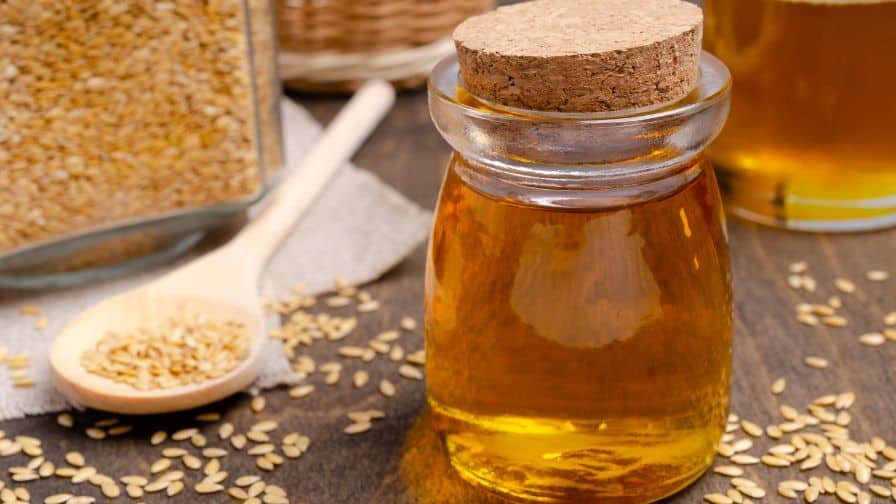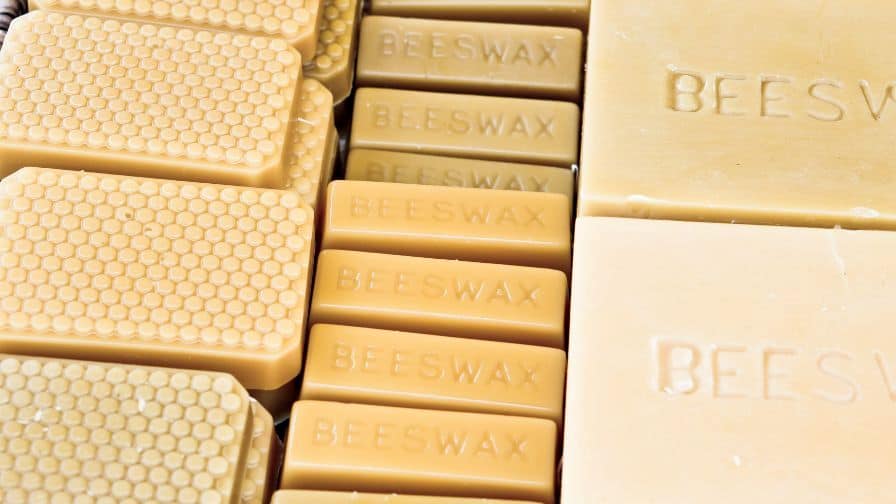
Boiled linseed oil is a popular finish for woodworking projects. It can suit furniture, floors, and even cabinets. But is it food safe?
In this article, we will take a look at the safety of boiled linseed oil and discuss whether or not it is safe to use around food.
Table of Contents
Whether Or Not Boiled Linseed Oil Is Safe To Use On Wood Around Food
Linseed oil is obtained from flax seeds and has been used for centuries in a variety of applications, including as a food additive, wood finish, and drying oil. Boiled linseed oil is a type of linseed oil that has been heated to improve its performance as a wood finish. While boiled linseed oil is safe to use on wood, there are some risks to know of.
Linseed oil is safe to eat in small amounts and is commonly used as a food additive. It is also safe to use on wood surfaces, including countertops and cutting boards. However, linseed oil can go rancid quickly! So it’s important to store it properly and use it up within a few months.
When used as a wood finish, boiled linseed oil is safe to use around food. However, it’s always best to stay on the side of caution and avoid using any type of oil finish on surfaces that come into direct contact with food. As you do choose to use a boiled linseed oil finish, wipe up any excess oil and allow the finish to cure for at least 24 hours before using the surface.
Risks of boiled linseed oil
While boiled linseed oil is safe to use in many situations, there are a few risks:
Flammability: Boiled linseed oil is flammable when wet. So take care when using it near open flames or heat sources. Allow the finish to dry completely before exposing it to any type of heat.
Rancidity: Rancid oil can cause stomach upset and is not recommended for use on wood surfaces.
Toxicity: Linseed oil is safe to eat in small amounts, but large amounts can get toxic. It’s always best to stay on the side of caution and avoid using linseed oil on surfaces that come into direct contact with food.
When used properly, boiled linseed oil is a safe and effective way to finish wood surfaces. However, as with any type of finish, there are some risks to keep in mind. Use caution and follow the manufacturer’s instructions to avoid any problems.
What Is Boiled Linseed Oil And What Are Its Benefits On Wood?
Linseed oil is derived from the flax plant and has been used for centuries in a variety of applications. It’s an all-natural product that has several benefits, particularly when it comes to wood. Boiled linseed oil has been heated to speed up the drying time.
When applied to wood, it penetrates deep into the pores of the wood. This works to protect the wood from water damage and also prevents cracking and splitting. The oil also restores the natural luster of the wood.
Boiled linseed oil is also a great way to protect your hands while working with wood. The oil creates a barrier between your skin and the wood, which can prevent splinters and other injuries.
As you’re looking for an all-natural product that can protect your woodworking projects, boiled linseed oil is a great option. It’s easy to apply, dries quickly, and offers a variety of benefits. Give it a try the next time you’re working with wood!
Is Boiled Linseed Oil Good For A Dining Table?
Subscribe to fleanine
Yes. It will safeguard the wood and make it last longer.
-Boiled linseed oil can apply with a brush or cloth and should allow drying for at least 24 hours before use. You can also use a natural or synthetic bristle brush.
-Do not leave rags soaked in linseed oil as it can self-ignite.
-When using indoors, open windows for ventilation. As you are outside, do this in an area away from any sparks or flames.
-Apply a second coat as needed. You should always test a small area before applying it to the entire piece.
-Wipe up any spills immediately and clean brushes with mineral spirits.
Boiled linseed oil is a great way to protect your dining table and make it last longer. It’s easy to apply, allow plenty of time for it to dry before using your table.
How To Apply Boiled Linseed Oil On Wood
Putting boiled linseed oil on wood is a great way to protect it from the elements and keep it looking its best. It penetrates deep into the wood, providing a long-lasting barrier against moisture and dirt. Gives the wood a rich and natural luster that enhances its beauty.
To apply boiled linseed oil:
-Start by cleaning the wood with a mild detergent and water.
-Let the wood dry completely.
-Pour some boiled linseed oil into a clean rag and rub it into the wood in a circular motion. Work the oil into all of the nooks and crannies.
-Let the oil soak in for at least 30 minutes.
-Wipe off any excess oil with a clean rag.
Enjoy your beautiful and well-protected wood!
The Safety Of Boiled Linseed Oil On Wood For Food
When it comes to boiled linseed oil and wood, there is much debate on whether or not the two are safe for use together. Some say that boiling the linseed oil makes it more dangerous to use on wood, while others claim that it is perfectly safe. So, what is the truth?
To understand the safety of boiled linseed oil on wood, it is important to understand what each of these things is and how they are used.
Linseed oil is extracted from flax seeds and has been used for centuries as a wood preservative. It is high in fatty acids, which protect the wood from rot and decay.
Boiling the linseed oil makes it more viscous, which means that it will penetrate the wood better. This makes it an ideal choice for treating outdoor furniture or decks.
However, some people believe that boiling the linseed oil creates dangerous fumes that can get harmful when inhaled. There is no scientific evidence to support this claim. But it is still a thing to know of.
In general, boiled linseed oil is safe to use on wood. However, it is always a good idea to test a small area first to make sure that there are no adverse reactions. When you do experience any problems, discontinue use immediately.
Alternatives To Boiled Linseed Oil On Wood For Food

Are you looking for an alternative to boiled linseed oil? You’re not alone.
Linseed oil has been used for centuries as a finish for wood. It’s durable, it’s easy to apply, and gives the wood a beautiful lustrous sheen.
But there are some drawbacks to using linseed oil:
-The biggest one is that it’s made from flaxseed, which is a food source for animals. That means that when you’re using linseed oil on your cutting board or countertop, there’s a chance that your food can get contaminated with animal products.
-As you’re looking for a non-toxic alternative to linseed oil, make sure that the product you choose is food-safe.
-Linseed oil can also get difficult to clean up when you spill it. It’s not water-soluble, so you’ll need to use a solvent like paint thinner to remove it from your surfaces.
So what are some alternatives to boiled linseed oil? Here are many options:
-Mineral oil won’t go rancid. It’s also inexpensive and easy to find at your local hardware store.
-Beeswax can use as a finish for wood. It’s durable and has a beautiful amber color.
-Carnauba wax is similar to beeswax. It’s slightly more expensive, but it has a higher melting point. So it can suit hot surfaces like stovetops.
-Lanolin is an oil that comes from sheep wool. It’s food-safe and very heat resistant, making it a good option for use on stovetops.
-Paraffin wax is similar to beeswax and carnauba wax. It’s inexpensive and easy to find. But it doesn’t have the same durable finish as the other two options.
When you’re choosing an alternative to linseed oil, make sure that it’s food-safe and easy to clean up. Don’t forget to test it on a small area before you use it on your entire surface.
